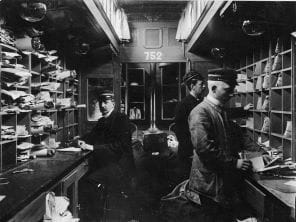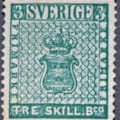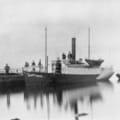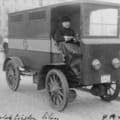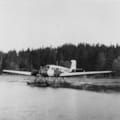Railways
The Danish postal service was quick to exploit the innovation of sending post by train. The first Danish railway line between Altona and Kiel opened in 1844.
Posten provided special carriages with a supervising postman. ”Rolling post offices”, with on-board mail sorting, were introduced in 1856. The last rolling post office was use until 1997.
The first railway 1856
The first railway lines in Sweden opened in 1856. Mail in letterboxes was sent via these lines at an early stage, though the Swedish postal board remained more doubtful than their Danish counterpart about the benefits of rail transport, mainly due to the expense involved. But using Denmark as a model, “postman compartments” were introduced on the Stockholm - Gothenburg line.
The number of these compartments increased steadily through the 1910s and then began to decrease, due primarily to the closure of smaller railway lines and the transportation of post by road.
Today, the wind has shifted and once again favours railways. All Swedish second-class mail has been sent by rail since 2001, for reasons that include environmental considerations.
